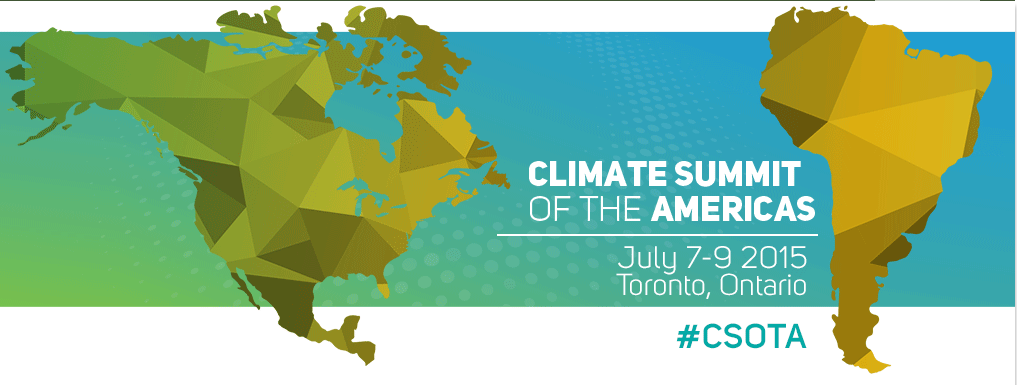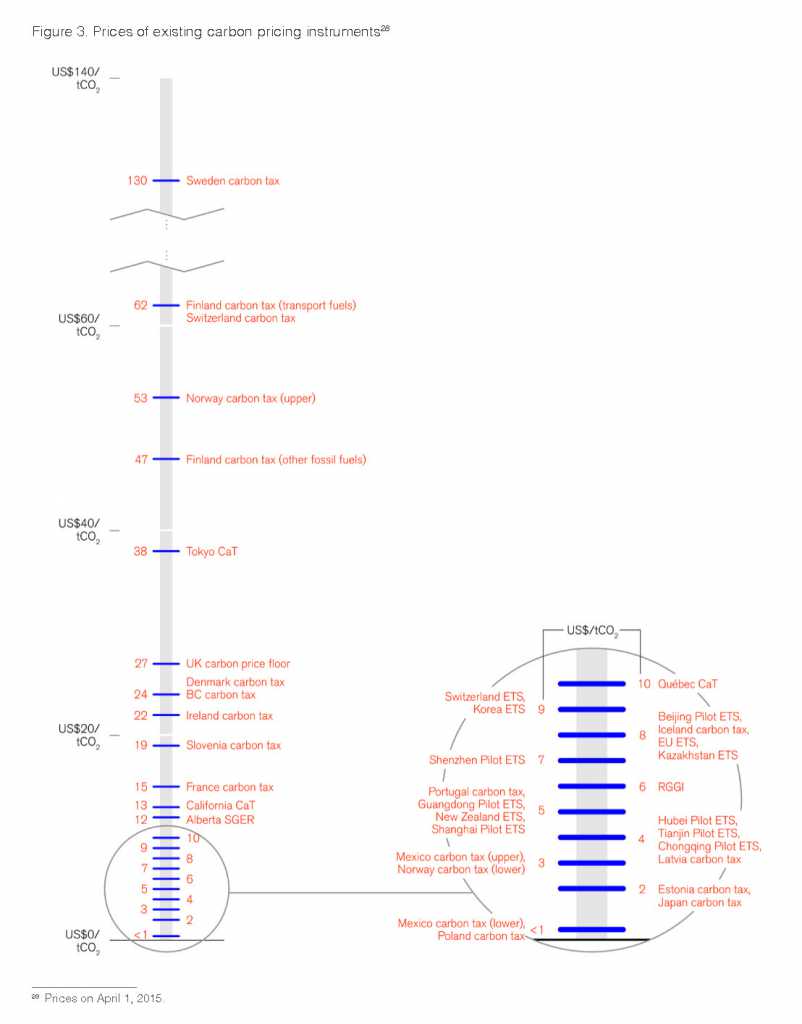
Toronto Climate Summit: Local to Global Carbon Pricing
This week, climate policy folks from across North and South America are converging on Toronto. A major focal point of discussion will be the role of subnational carbon pricing policy. Ecofiscal has put quite a lot of thought into the idea that provincial carbon pricing might be practical way forward here in Canada. But the Climate Summit of the Americas provides an opportunity to take a quick look at subnational policies elsewhere in the world as well. I want to make three main points on that note.
Climate momentum in provincial, state-level, and regional carbon pricing
First, Canada is not alone in seeing subnational carbon pricing policy play an important role. The World Bank Group and Ecofys find that carbon pricing policy now applies to almost a quarter of global emissions, including more than 20 subnational policies, as illustrated in the figure below. British Columbia, Alberta, Quebec, and California all have carbon pricing policies, and Ontario is soon to follow. Oregon is considering its options. The Regional Greenhouse Gas Initiative prices GHG emissions from electricity generation in nine U.S. states. Three subnational carbon pricing systems operate in Japanese cities. And seven city-level pilot projects are underway in China.

The road to Paris… and beyond
Second, subnational carbon pricing is a step toward a much more ambitious end goal: global policy to drive global emissions reductions. A pathway toward global emissions reductions is the objective of the UNFCC meetings that will be held at the end of this year in Paris. As you probably already know, the path toward a global agreement on GHG emission has been anything but linear. It’s become increasingly clear that an uneven patchwork of carbon pricing policy is an unavoidable stepping-stone toward a broader solution.
And that’s exactly why policy coordination is an important issue. As the World Bank figure below highlights, the carbon prices across existing policies is anything but uniform. Differential carbon prices lead to less cost-effective emissions reductions over all and can create risks for competitiveness and leakage.

Mechanisms for coordination are already emerging, particularly at a sub-national level. Quebec, California, and Ontario are linking their emissions trading systems together to create a common carbon market (and carbon price). The Chinese pilot systems are similarly exploring opportunities for coordination and linkage, and plans are in place to transition to a broader, national system.
Opportunities for learning
In the meantime, the range of different carbon pricing policies in place provides an opportunity to learn about policy design. What works? What doesn’t? Sharing these lessons can be incredibly useful as we evolve toward broader, more unified policy both within Canada and abroad. And that’s exactly why the Summit in Toronto this week is so important. Sharing information and intelligence is a critical step from fragmented policy to broader action.




Comments are closed.